Sometime back, a colony of weaver ants (Oecophylla smaragdina) decided to grace my home by constructing a nest on a hibiscus plant in my backyard. I spent many a happy hour observing these fascinating little creatures as they went about their daily business of constructing their nest, gathering food, maintaining their gardens of homopterans (sucking insects that feed on plant juices)…
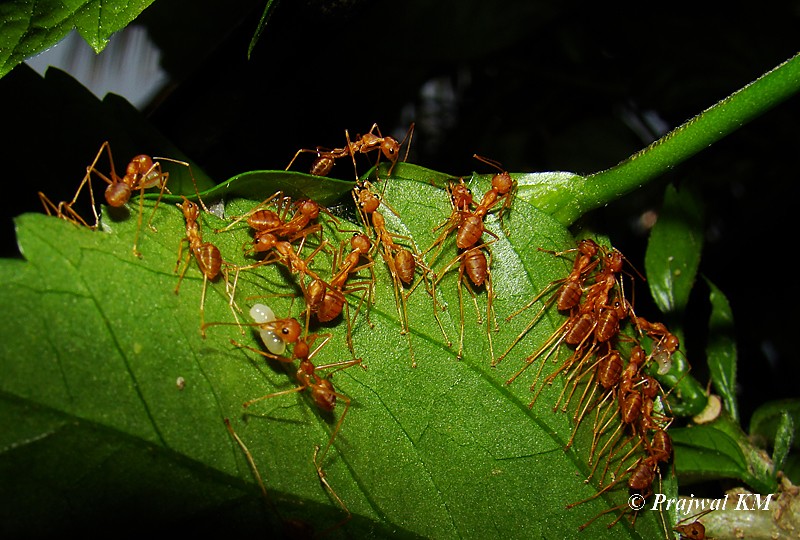 |
| Using silk, from larva, to stitch together the leaves |
Weaver ants are known for building nests by weaving together leaves of the host plant – hence their name. Initially, while constructing the nest, worker ants will hold the leaves together with their mandibles. Then, other workers use the silk from larvae, which are about to enter the pupal stage, to sew the leaves together. A gentle tap, from a worker’s antenna, encourages the larva to extrude silk from its salivary glands, which is then used to bind the leaves.
 |
- The larger, Major workers which leave the nest to hunt, defend the territory, ...
- And the smaller, Minor workers which stay in the nest performing tasks such as maintaining the nest, taking care of the homopterans, ...
Just as humans take care of cattle, the Minor workers move the homopterans to good feeding grounds, guard them, and gather special droplets of sugar-rich syrup, known as honeydew, that the bugs excrete.
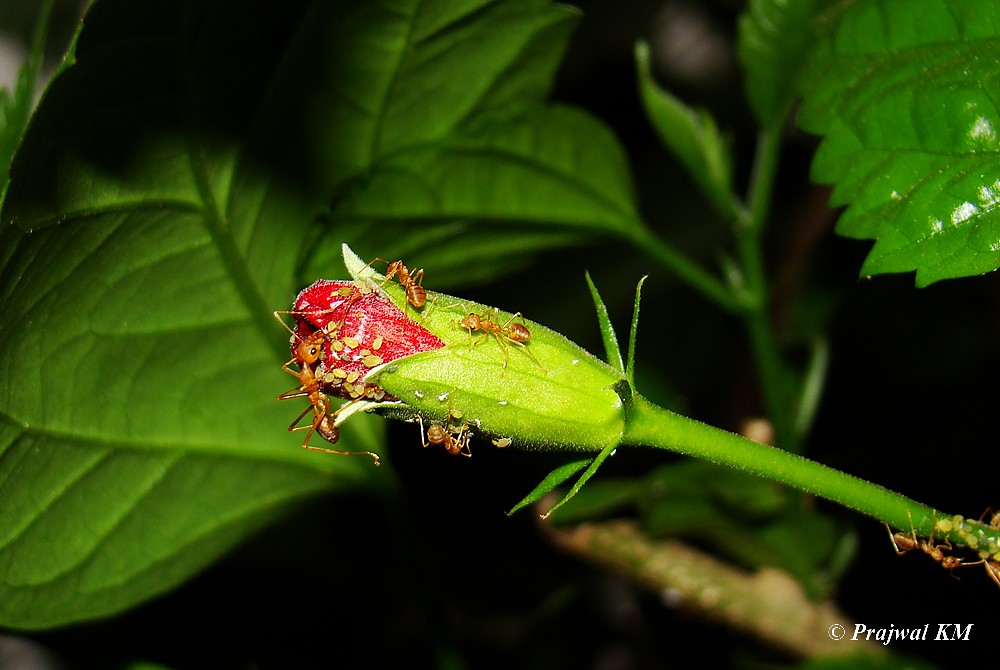 |
| Minor workers harvesting homopterans |
 |
| Major workers exchanging chemical messages |
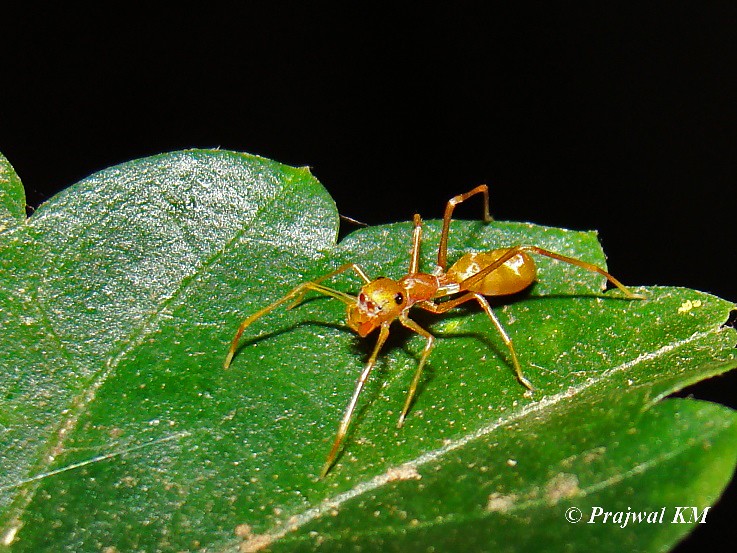 |
Female Kerengga Ant-like Jumper - a spider disguised as a weaver ant. Observe that it has eight legs, and also that the eyes are quite different from those of a weaver ant. |
Due to the aggressive nature of the weaver ants, as well as the foul taste the ants have to some predators, some spiders mimic the weaver ants for protection.
Though these spiders stay in the vicinity of the ant colony, they avoid coming in contact with the weaver ants. During the entire period I was observing this spider, it never came close to a weaver ant.
But, alas, everything in this world must come to an end. The leaves, forming the nest, began to dry up. It was time for the ants to move to another nest.
 |
| Nest starting to dry up. |
The ants started off with the difficult job of shifting all the larvae from the nest. Here, the ants faced a difficulty. The distance from the plant to an overhanging wire, upon which the ants found it convenient to move, was too great for a single ant to bridge. Not to be deterred, by intertwining their bodies, the ants formed an ant-chain to cross over the gap; demonstrating a quality of ants which makes them one of the most successful and widely distributed insects of our planet – strength in numbers. The formation of such living chains is a common tactic used by weaver ants whenever they come across a gap too wide to cross – either while moving through the branches or during nest building.
 |
| Living chain of ants |
As though Mother Nature herself was sad at the hardship faced by her little children, it began to rain, accompanied by thunder and lightning. But, the ants, with the single minded purpose they are well known for, continued long into the evening, until the nest was completely empty and all the larvae safe.
Finally, with the last larva safely carried away, my window into the rarely seen, private world of ants had closed. I keep checking the plant, hoping that, one day the same drama may be played again!
~ o ~ ~o~ ~o~
UPDATE: 26-Oct-2011
Finally my wishes were answered. The ants constructed not one, but three nests in my backyard! Armed with a recently acquired SLR camera, I could get better shots this time.
 |  | 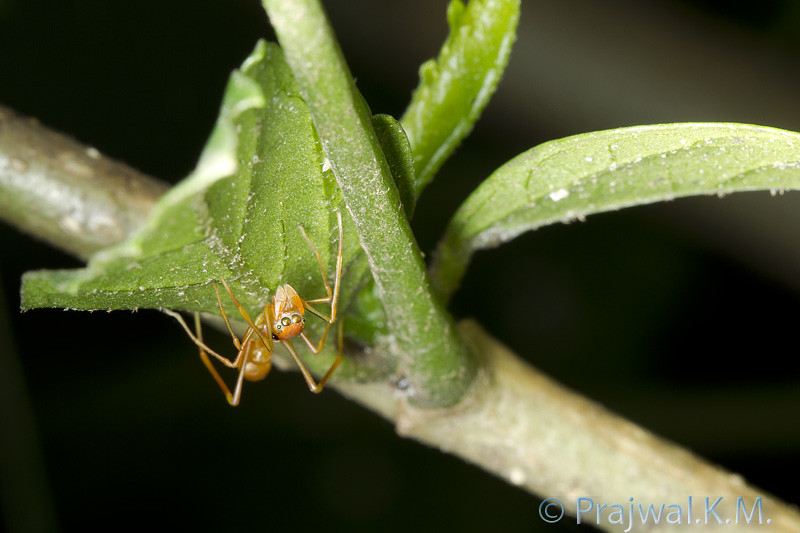 |
| Weaver ants greeting each other | Kerrenga Ant-like Jumper male | Kerrenga Ant-like Jumper female |
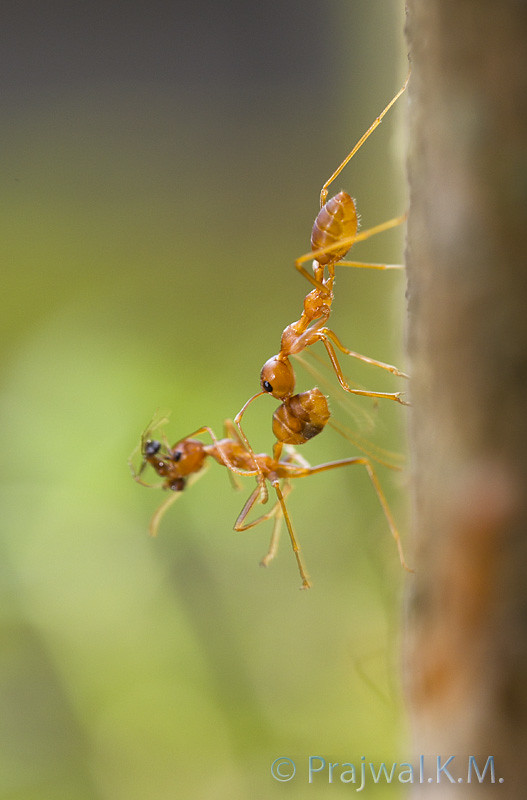 | 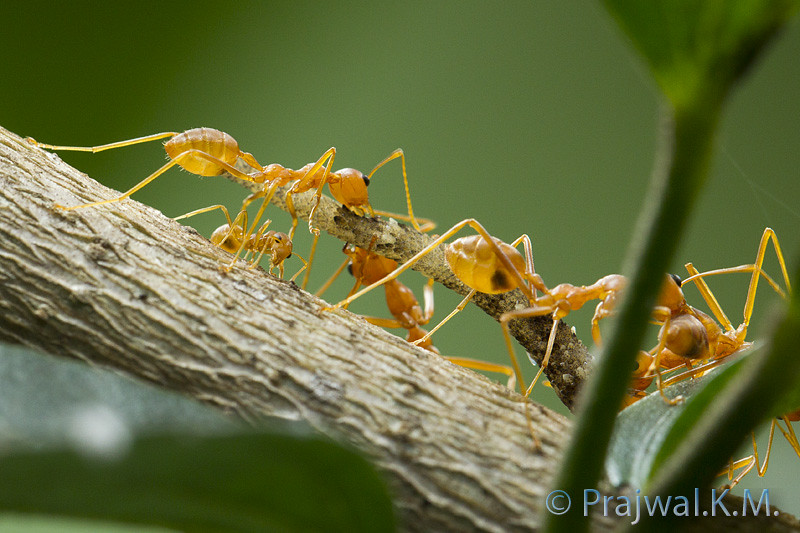 |  |
| A weaver ant carrying a dead weaver ant which has in turn caught a small brown ant. | A group of weaver ants carrying a discarded gecko's tail to their nest. | Weaver ant nest |
The following links contain more information on weaver ants:

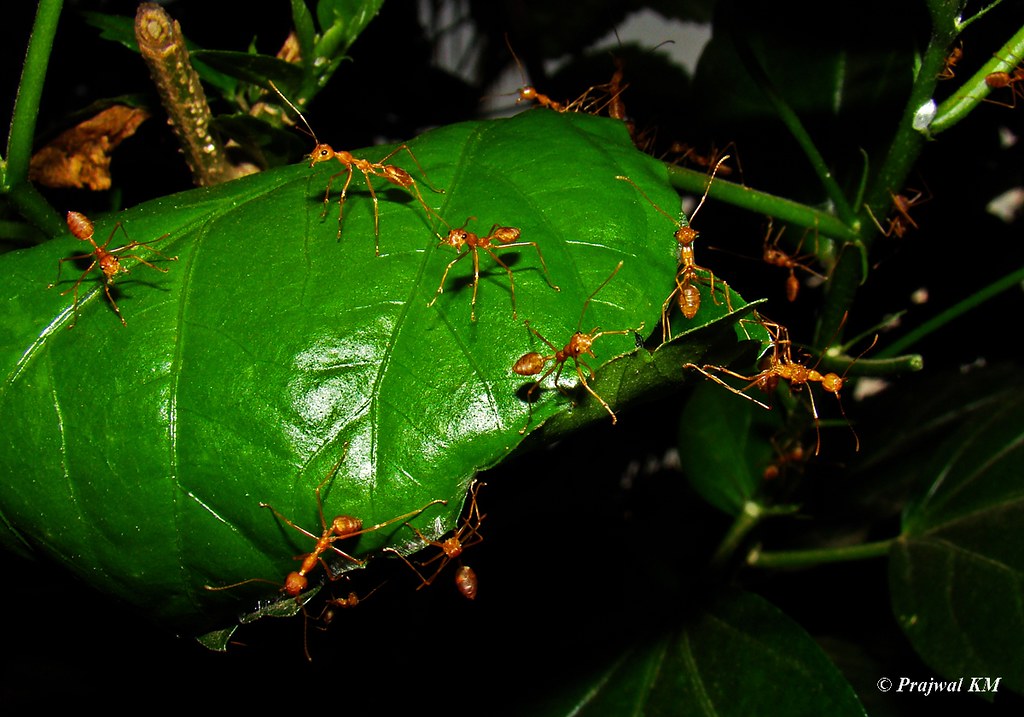



Excellent documentation and text, Prajwal! Enjoyed this post very much.
ReplyDeleteDeepa.
Thanks Deepa.
ReplyDelete